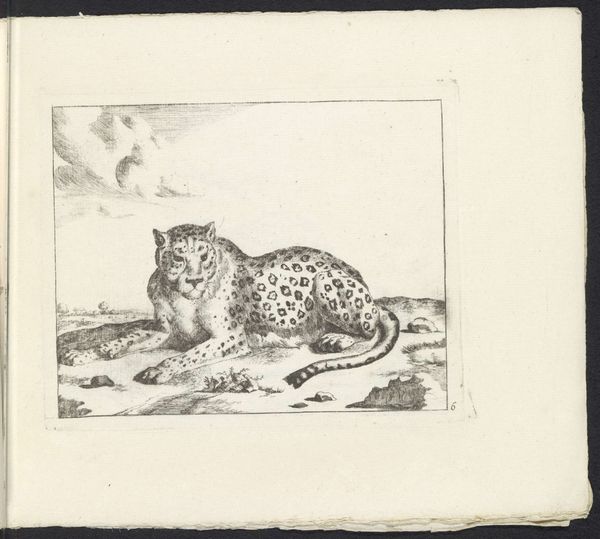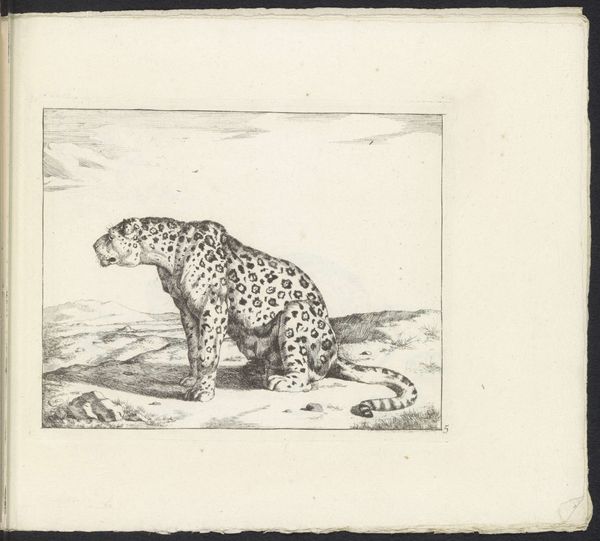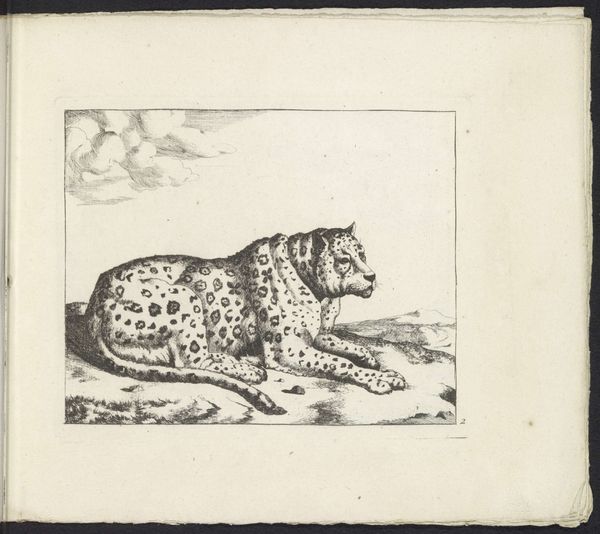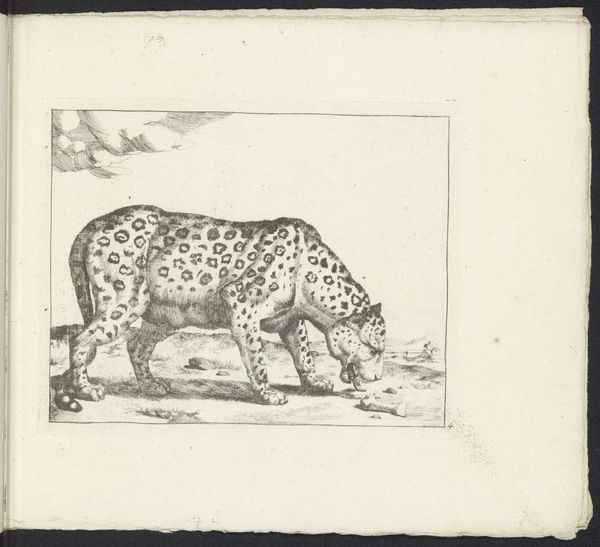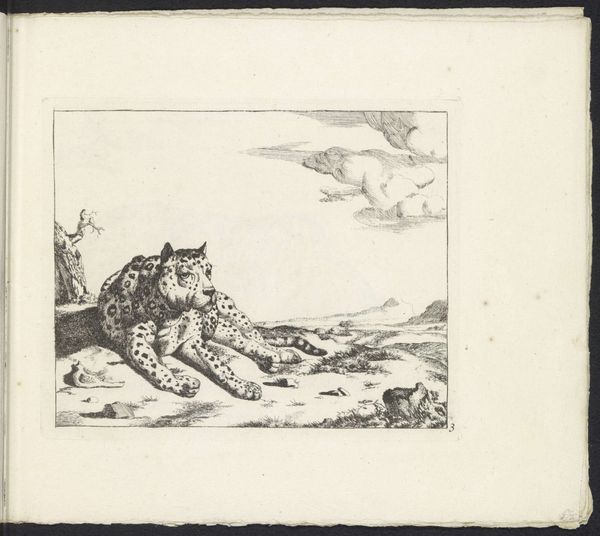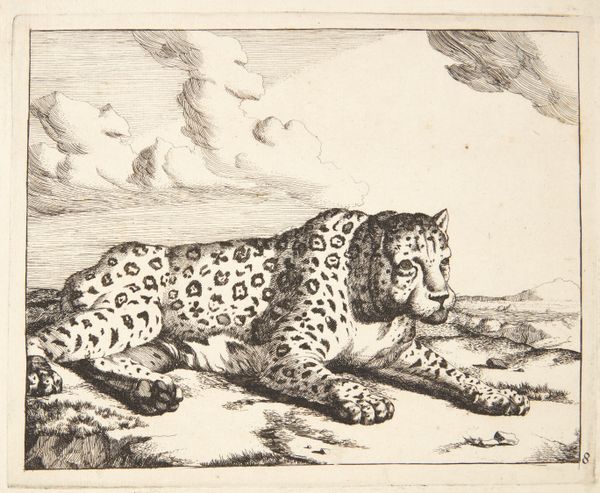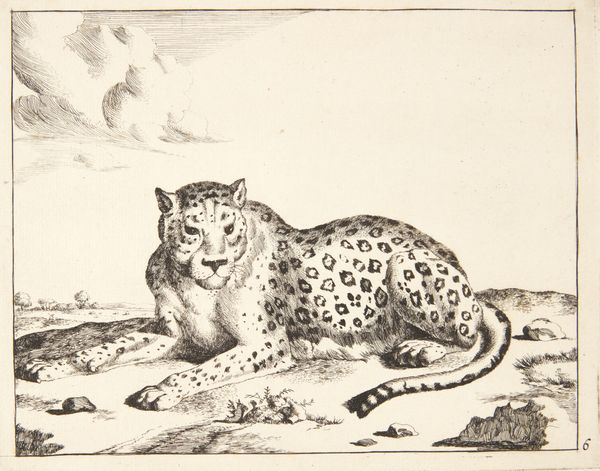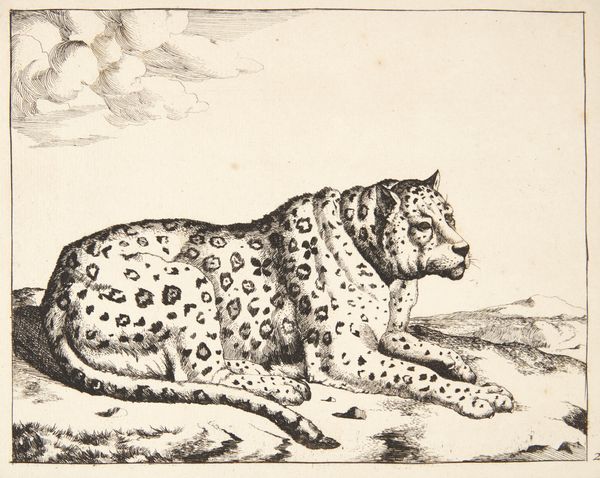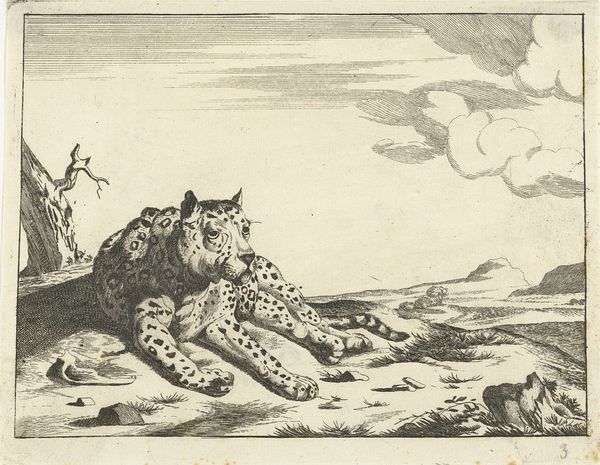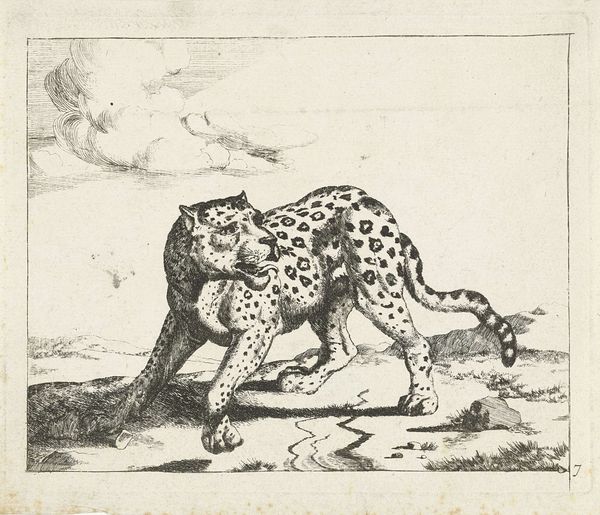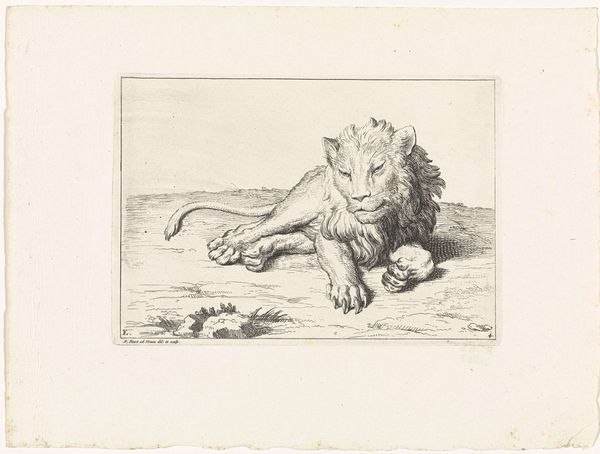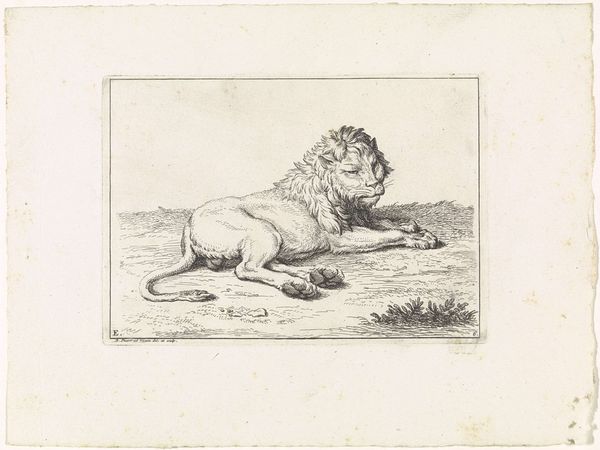
drawing, ink, engraving
#
portrait
#
drawing
#
quirky sketch
#
pen drawing
#
dutch-golden-age
#
pen sketch
#
sketch book
#
landscape
#
figuration
#
personal sketchbook
#
ink
#
ink drawing experimentation
#
pen-ink sketch
#
line
#
pen work
#
sketchbook drawing
#
sketchbook art
#
engraving
#
realism
Dimensions: height 140 mm, width 173 mm, height 210 mm, width 270 mm
Copyright: Rijks Museum: Open Domain
Marcus de Bye created this print of a leopard in the Netherlands sometime in the mid-17th century. It gives us a sense of the cultural status of exotic animals at the time. A number of historical factors came together in the Netherlands to create a unique market for such images. As a major center of international trade, the Dutch Republic had access to commodities and information from across the globe. The rise of a wealthy merchant class created a new audience for art, one with a taste for luxury and the exotic. At the same time, Dutch artists were developing new techniques for printmaking, allowing them to create detailed and accurate images of the natural world. Prints like this one reflect a growing interest in natural history, but also the power dynamics of global trade and colonization. To understand this work more fully, we can look to period texts such as travelers' accounts, natural histories, and emblem books to reveal the cultural meanings attached to the image of the leopard.
Comments
No comments
Be the first to comment and join the conversation on the ultimate creative platform.
